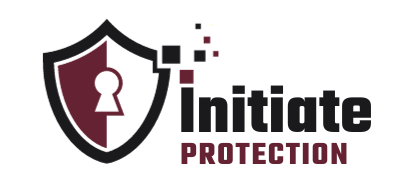Are your emails truly secure? In today’s digital age, protecting our personal and professional information is a top concern. With cyber threats on the rise, it’s important to take proactive steps towards email security. This article explores the best practices you can implement to safeguard your emails from potential hackers and online attacks. By following these tips, you can have peace of mind knowing that your sensitive information is safe.
What Is Email Security?
Email security is the process of safeguarding email accounts and their contents from unauthorized access, interception, or manipulation. This involves implementing strong passwords, two-factor authentication, and encryption protocols. Additionally, measures are taken to prevent phishing attacks, malware, and spam. By prioritizing email security, individuals and organizations can protect sensitive information and maintain confidentiality.
To enhance email security, it is recommended to regularly update email clients, avoid clicking on suspicious links or attachments, and use secure networks. By following these best practices, the risk of email-related security breaches can be significantly reduced, ensuring the safety of personal and professional communications.
Why Is Email Security Important?
Email security is crucial for both personal and professional use due to a variety of reasons:
- Privacy: Protecting sensitive information, such as personal data, financial details, and confidential business data, from unauthorized access is essential.
- Identity Theft: Email security helps prevent identity theft and phishing attacks, where cybercriminals attempt to deceive individuals into disclosing personal information.
- Malware Protection: Email security measures safeguard against malicious attachments and links that can infect computers with malware or ransomware.
- Reputation Management: Maintaining secure email practices establishes trust with clients and colleagues, protecting your reputation.
- Legal Compliance: Adhering to email security protocols ensures compliance with data protection and privacy laws, avoiding legal issues.
- Business Continuity: By safeguarding email communications, businesses can prevent disruptions and maintain smooth operations.
What Are the Common Threats to Email Security?
In today’s digital age, email has become an integral part of our personal and professional lives. However, with the convenience of email communication also comes the risk of cyber threats. In this section, we will discuss the common threats to email security that individuals and businesses face. From phishing scams to malware attacks, man-in-the-middle attacks to email spoofing, we will examine the various ways in which malicious actors can compromise the security of our emails. By understanding these threats, we can better protect ourselves and our sensitive information.
1. Phishing
Phishing is a common threat to email security and can lead to identity theft and financial loss. To protect yourself from phishing attacks, it is important to follow these steps:
- Be cautious of unsolicited emails asking for personal or financial information.
- Verify the sender’s email address and look for any spelling or grammatical errors.
- Avoid clicking on suspicious links or downloading attachments from unknown sources.
- Double-check the URL of any website that asks for sensitive information.
- Ensure that your email and antivirus software are up to date to detect and block phishing attempts.
Fun Fact: Phishing attacks accounted for 32% of data breaches reported in 2020. It is important to stay vigilant in order to protect your personal and professional information from these attacks.
2. Malware
Malware poses a significant threat to email security. To protect against this risk, there are several steps you can take:
- Install reliable antivirus software and keep it updated to detect and remove malware.
- Avoid opening email attachments or clicking on suspicious links from unknown senders.
- Regularly scan your computer and email attachments for malware.
- Ensure your operating system and software are up to date with the latest security patches.
- Enable automatic updates for your antivirus software to ensure timely protection against new malware threats.
Fact: In 2021, malware attacks accounted for 39% of all cyberattacks, highlighting the importance of robust email security measures.
3. Man-in-the-Middle Attacks
Man-in-the-middle attacks, also known as MITM attacks, pose a significant threat to email security. These attacks occur when a hacker intercepts communication between two parties, gaining access to sensitive information. To protect against these attacks, it is important to follow these steps:
- Utilize secure network connections, such as VPNs, to encrypt data and prevent unauthorized access.
- Enable encryption protocols, such as SSL/TLS, for email communication to ensure the confidentiality and integrity of data.
- Regularly update software and operating systems to patch vulnerabilities and strengthen security measures.
- Avoid using unsecured Wi-Fi networks, as they can leave your sensitive information vulnerable to hackers.
- Educate yourself and your team about the signs of a potential man-in-the-middle attack and stay vigilant against suspicious network activity.
Fact: By implementing strong security measures and remaining vigilant against suspicious network activity, man-in-the-middle attacks can be prevented.
4. Email Spoofing
Email spoofing is a common threat to email security. It involves sending emails that appear to be from a legitimate source, but are actually from a malicious sender. To protect against email spoofing, follow these steps:
- Enable SPF (Sender Policy Framework) and DKIM (DomainKeys Identified Mail) to verify the authenticity of incoming emails.
- Implement DMARC (Domain-based Message Authentication, Reporting, and Conformance) to prevent email spoofing and receive reports on failed authentication attempts.
- Educate yourself and your employees about email spoofing techniques, such as checking for suspicious email addresses or domain names.
- Avoid clicking on links or opening attachments from unknown or suspicious emails.
- Regularly update your email client and antivirus software to protect against known vulnerabilities.
- Consider using email authentication services or email security solutions that can detect and block spoofed emails.
By following these steps, you can significantly reduce the risk of falling victim to email spoofing attacks.
What Are the Best Practices for Email Security?
When it comes to email security, there are several best practices that can help protect your personal and professional information. In this section, we will discuss the top tips for keeping your emails safe from cyber threats. From using strong and unique passwords to utilizing encryption and regularly updating your software, we will cover the essential steps you can take to ensure the security of your emails. By following these best practices, you can safeguard your sensitive information and maintain peace of mind while using email for both personal and professional purposes.
1. Use Strong and Unique Passwords
Using strong and unique passwords is crucial for ensuring email security. Here are some steps to follow:
- Create a password that is at least 8 characters long.
- Use a combination of uppercase and lowercase letters, numbers, and symbols.
- Avoid using common words, personal information, or sequential characters.
- Use a different password for each online account.
- Consider using a password manager to generate and securely store your passwords.
- Regularly update your passwords to maintain security.
Pro-tip: For added protection, enable multi-factor authentication.
2. Enable Two-Factor Authentication
Enabling two-factor authentication is crucial for enhancing email security and protecting personal and professional accounts. Follow these steps to enable this important security feature:
- Access your email account settings.
- Find the option to enable two-factor authentication.
- Select a verification method: SMS, email, or authentication app.
- Follow the prompts to verify your identity.
- Once set up, you will receive a verification code each time you log in.
- Enter the code to gain access to your email.
It is also highly recommended to regularly update passwords, be cautious of suspicious emails and links, and use email security software in addition to enabling two-factor authentication. Safeguarding your email is crucial in today’s digital landscape.
3. Be Cautious of Suspicious Emails and Links
Cautiousness is essential in protecting yourself from email security threats. Here are some steps to follow when dealing with suspicious emails and links:
- Think before you click: Avoid clicking on links or downloading attachments from unknown or suspicious sources.
- Verify the sender: Check the email address and sender’s details for any signs of impersonation or inconsistency.
- Inspect the content: Look for grammatical errors, generic greetings, urgent requests, or unusual subject lines, which may indicate a phishing attempt.
- Hover over links: Before clicking, hover your mouse over a link to see the URL. Be wary of shortened or unfamiliar URLs.
- Don’t share sensitive information: Legitimate organizations won’t ask for personal details via email. Avoid providing confidential information in response to suspicious emails.
True story: A colleague received an email claiming to be from their bank, urging them to update their account information. They were cautious, contacted the bank directly, and discovered it was a phishing attempt. Being vigilant saved them from potential financial loss.
4. Regularly Update Software and Operating Systems
Regularly updating software and operating systems is crucial for maintaining email security. Here are the necessary steps to follow:
- Enable automatic updates for your operating system to ensure you’re using the latest security patches.
- Install updates for email clients, such as Microsoft Outlook or Gmail, as they often contain security enhancements.
- Keep antivirus and anti-malware software up to date to protect against new threats.
- Regularly update plugins, extensions, and add-ons used with your email client.
- Upgrade to the latest version of your email client for improved security features.
In 2017, the WannaCry ransomware attack infected hundreds of thousands of computers worldwide due to unpatched software vulnerabilities. This event highlighted the importance of regularly updating software and operating systems to prevent such security breaches.
5. Use Encryption for Sensitive Information
Using encryption is crucial for protecting sensitive information in emails. Follow these steps to ensure secure communication:
- Choose a reputable email provider that offers encryption.
- Enable encryption settings in your email client or webmail.
- Utilize end-to-end encryption tools such as PGP (Pretty Good Privacy) or S/MIME (Secure/Multipurpose Internet Mail Extensions).
- Encrypt attachments separately before sending them.
- Exchange encryption keys securely with recipients.
- Avoid using public Wi-Fi networks when sending encrypted emails.
- Regularly update your encryption software for the latest security features.
6. Use a Virtual Private Network
Using a virtual private network (VPN) is an effective step to enhance email security. Here are some key reasons why a VPN is crucial:
- Secure Connection: A VPN encrypts data, preventing unauthorized access, ensuring the confidentiality of email communication.
- Protection from Network Attacks: VPNs shield against man-in-the-middle attacks by creating a secure tunnel between the device and the email server.
- Anonymity: VPNs cloak the user’s IP address, making it difficult for hackers to track and target email activity.
- Bypass Restrictions: VPNs allow users to access email services even in countries with strict internet censorship or on unsecured public Wi-Fi networks.
- Establish a Secure Connection: By incorporating a VPN into your email security practices, you can establish a secure and private connection for your email communications.
7. Backup Important Emails and Data
- Make sure to regularly backup your important emails and data to ensure their safety and accessibility.
- It is crucial to choose a reliable backup solution, such as cloud storage or external hard drives.
- Set up automatic backups to avoid the risk of forgetting to manually backup your data.
- Periodically test the backup process to ensure that your data is being backed up correctly.
True story: A friend of mine recently experienced the loss of their important emails and data due to their email account being hacked. Fortunately, they had a backup system in place and were able to retrieve their information and restore their account. This situation serves as a reminder of the significance of regularly backing up important emails and data to prevent such devastating losses.
How Can Businesses Improve Email Security?
When it comes to email security, businesses have a responsibility to protect their sensitive information and that of their clients. In this section, we will discuss four key ways that businesses can improve their email security. First and foremost, implementing email security policies can help establish guidelines for safe email practices. Secondly, training employees on email security best practices can increase awareness and reduce the risk of human error. Additionally, utilizing email security software and conducting regular security audits are crucial components in maintaining a secure email system.
1. Implement Email Security Policies
Implementing email security policies is essential in safeguarding sensitive information and defending against cyber threats. To ensure effective protection, here are the key steps to follow:
- Evaluate Existing Policies: Conduct an assessment of current policies and identify any gaps or weaknesses.
- Create Strong Password Policies: Enforce the use of complex, unique passwords that are regularly updated.
- Implement Encryption: Make it mandatory to use encryption for transmitting and storing sensitive data.
- Train Employees: Provide comprehensive training on best practices for email security, including identifying phishing attempts and avoiding suspicious links.
- Monitor and Update: Regularly monitor and update policies to address emerging threats and vulnerabilities.
Pro-tip: Remind employees regularly to remain vigilant and report any suspicious emails or activities to the IT department.
2. Train Employees on Email Security Best Practices
Training employees on email security best practices is crucial in protecting sensitive information and preventing data breaches. Here are some steps to consider:
- Start with an orientation: Provide new employees with an overview of email security policies and protocols.
- Regular awareness training: Conduct periodic training sessions to educate employees about the latest email security threats and best practices.
- Create strong password policies: Teach employees to use strong and unique passwords and to update them regularly.
- Identify phishing attacks: Train employees to recognize phishing emails and avoid clicking on suspicious links or downloading attachments from unknown sources.
- Encourage reporting: Establish a culture of reporting any suspicious emails or incidents to the IT department promptly.
- Stay updated: Keep employees informed about software updates, security patches, and any changes to email security protocols.
Pro-tip: Provide ongoing support and reminders to reinforce email security training and ensure that employees understand the importance of following best practices.
3. Use Email Security Software
Using email security software is crucial to protect your personal and professional information from cyber threats. Here are some steps to effectively use email security software:
- Choose a reputable email security software provider that offers robust features and regular updates.
- Install the software on all devices that access your email accounts.
- Configure the software to automatically scan incoming and outgoing emails for viruses, malware, and spam.
- Enable encryption features to ensure secure transmission of confidential data.
- Regularly update the software to stay protected against new threats and vulnerabilities.
- Regularly monitor and review the software’s logs and reports for any suspicious activity.
- Train yourself and your employees on how to effectively use email security software and recognize potential threats.
Implementing email security software is a proactive measure to safeguard your sensitive information and maintain the integrity of your email communications.
4. Conduct Regular Security Audits
Conducting regular security audits is crucial for maintaining the integrity of email systems and safeguarding sensitive information. Here are the steps to follow:
- Identify the scope: Determine the areas of the email system to be audited, such as user accounts, access controls, and email filtering.
- Assess vulnerabilities: Use penetration testing and vulnerability scanning tools to identify any weaknesses or potential risks.
- Review policies and procedures: Evaluate the effectiveness of existing security policies, including password requirements, encryption protocols, and incident response plans.
- Monitor email logs: Analyze email logs to identify any abnormal or suspicious activities, including unauthorized access attempts or data breaches.
- Test backups and recovery: Verify the integrity and accessibility of email backups to ensure that critical data can be recovered in case of an incident.
- Update security measures: Implement any necessary changes or enhancements to address identified vulnerabilities and align with industry best practices.
- Train employees: Provide regular training sessions to educate employees on email security best practices and raise awareness of potential threats.
A company regularly conducted security audits and discovered a phishing attack targeting their employees. As a result, they promptly notified their staff, blocked access to compromised accounts, and reinforced training to prevent similar incidents in the future. By conducting regular security audits, they proactively protected their email system and sensitive data.
What Should You Do if Your Email is Compromised?
If your email is compromised, it is important to take immediate action to protect your personal and professional information. Here’s what you should do:
- Change your password: Create a strong, unique password that includes a combination of letters, numbers, and special characters to prevent further unauthorized access.
- Enable two-factor authentication: Add an extra layer of security by requiring a verification code in addition to your password.
- Check for suspicious activity: Review your email settings, sent folders, and contacts for any unauthorized changes or messages that may have been sent without your knowledge.
- Update your security software: Ensure your antivirus and anti-malware programs are up to date to detect and prevent any potential threats.
- Contact your email provider: Inform them about the compromise and follow their instructions to recover your account and secure it from further attacks.
Pro-tip: It is important to regularly monitor your email account for any unusual activity and educate yourself on common phishing techniques to avoid falling victim to email scams.
Frequently Asked Questions
What are some essential email security best practices for personal use?
Some essential email security best practices for personal use include using strong and unique passwords, enabling two-factor authentication, being cautious of suspicious emails and attachments, and regularly updating your security software.
How can I ensure my professional emails are secure?
To ensure the security of your professional emails, you should use a secure email provider, encrypt sensitive information, limit access to your work email account, and avoid using personal email for work purposes.
What is the importance of using a strong password for email accounts?
Using a strong password is crucial for email security as it makes it difficult for hackers to access your account. A strong password should be at least eight characters long and include a combination of letters, numbers, and special characters.
What should I do if I receive a suspicious email or attachment?
If you receive a suspicious email or attachment, do not open it or click on any links. Instead, delete the email immediately and report it to your email provider. It is also essential to educate yourself on how to identify phishing emails.
How often should I change my email password?
It is recommended to change your email password at least every six months for personal use and more frequently for professional use. This helps to prevent any potential security breaches and keeps your account secure.
What are some additional best practices for email security?
Other best practices for email security include regularly backing up your emails, being cautious when using public Wi-Fi, and keeping your email software and operating system up to date. It is also crucial to educate yourself and your employees on email security best practices.






